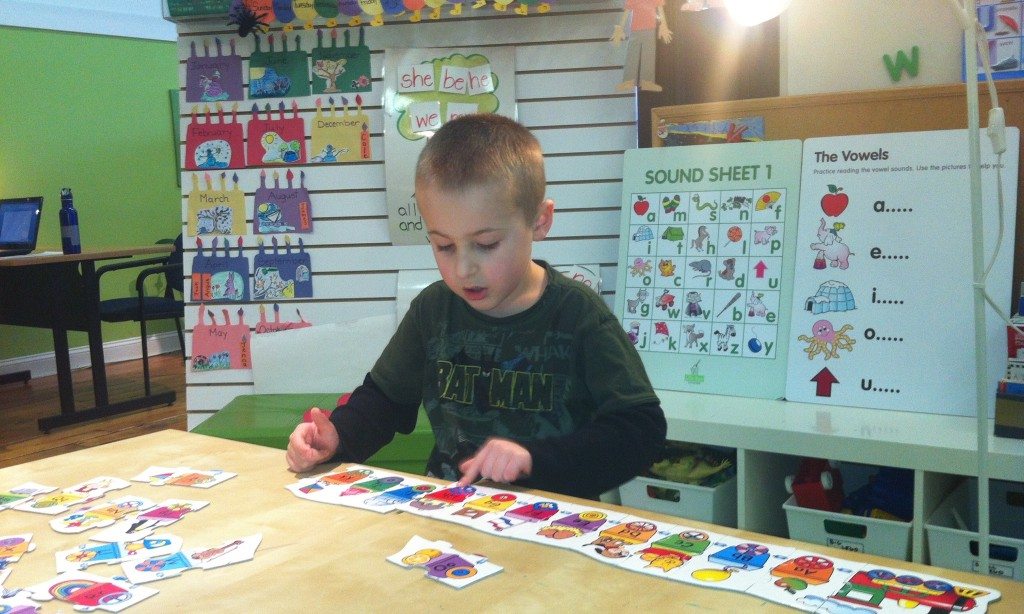Three Exercises to Prepare for Kindergarten

With kindergarten registration behind us, the next question on many a Vancouver mom’s mind is, “Will my child be ready?” Today we have some tips to help your child prepare for kindergarten from Tenessee Briand of Little House Tutoring.
Sending your children off to kindergarten before they are ready is like going to your first university lecture without a laptop or textbooks. To participate in class, you need to be prepared with the appropriate tools. How do you help your children to prepare for kindergarten? As their first teacher you can make sure they have the tools and skills necessary to feel confident. The better prepared your children are, the more they will get out of it, and the less likely problem behaviours will arise. The first years of your children’s education are formative, so send them out into the world with the confidence and the knowledge they’ll need, in order to use their voices and be heard.
As an educator, I know the importance of starting early when you prepare for kindergarten. Children are never too young to begin learning the fundamentals that will help set them up for future achievement; don’t take for granted the ability to hold a pencil properly or to sit in a seat for any amount of time. By cultivating these most basic skills early you are increasing the chances of future success significantly. That is why I would like to put the confidence back into parents as educators, so I have chosen three of the easiest and most practical lessons you can do at home to help prepare your child for school. And remember, the way your child feels about learning now, can affect how they feel about it for the rest of their lives, so always try to make it fun!
Prepare for Kindergarten
1. Clip and Flip
Have your child sit in a chair with her feet flat on the ground. Place a pencil on the table or desk in front of her so that the tip of the pencil is pointed right at her belly button. Tell her to take her clippers (thumb and index finger) and clip the pencil. Then ask her to flip the pencil so the eraser is now pointing at her. This will ensure she is holding a pencil correctly. Continue to practice this technique, saying “clip and flip”, explain to your child that this is the proper way to hold a pencil and why it’s important. Now when you see your child holding her pencil, crayons
or felts incorrectly, you simply say “clip and flip” as a positive reminder.
2. Alphabet Train
Write the alphabet on index cards (one letter per card) – you can do this with both upper case and lower case letters. For fun you can even draw a picture of a caboose to go at the front of the train. Lay all the cards on the floor, all mixed up, so that your child has to discover each letter. Find the A and tape it to the caboose. Now ask your child which letter comes next, if he doesn’t know ask him to sing the alphabet song with you. Continue to do this until you have built the entire train, or alphabet from a-z. Now we can go on a train ride through the living room, under the dining room table and into the kitchen. If your child gets stuck you remind him, “How do you help yourself? You can sing the alphabet song!” Allowing children to discover
ways of helping themselves is the beginning of teaching independence, which will make them more confident learners.
3. Matchy Matchy
This is a great activity for teaching almost any concept. Let’s begin with teaching letter sounds. Now, you don’t want to overwhelm your child, so begin with five or ten letters. Write the lower case letter on one card and then on another card draw a picture of a corresponding key word. For example, write an a, then draw a picture of an apple. On another card write a b and then draw a picture of a bat on yet another card. If you start with five letters then you will have ten cards altogether. Introduce the cards one pair at a time having your child repeat after you. “A says ah for apple” and then show them the pair, so on and so on. Lay the cards out on a table or on the floor ensuring that they are all mixed up and then play Matchy Matchy. Once your child has mastered these sounds add more until they know all the sounds of all the letters in the alphabet.
Here’s an example of the alphabet train in action:
How are you helping your child prepare for kindergarten?
Little House Tutoring
www.littlehousetutoring.com | Twitter | Facebook
Tenessee Briand is co-founder and co-operator of Little House Tutoring, a team of therapeutic tutors in Vancouver, BC, that specialize in teaching language skills to students of all ages with learning challenges. Tenessee believes that learning should be fun, and that Little House should be a place of warmth and comfort for their students. She wants every student to have a positive memory of their educational journey and that they felt special and important at Little House.
Would you like to write for us? We welcome well-written guest submissions with a local interest slant. Share your tips, review local businesses and highlight hot trends for Vancouver moms. Get all the info on our Contributor Page!



















